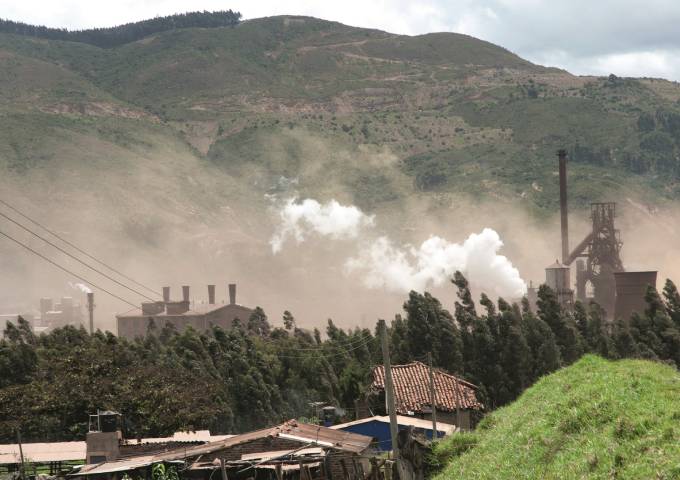Anatomy of the escazú agreement, a tool to protect the environment
By: Amira Abultaif Kadamani
Photos:
Environment

By: Amira Abultaif Kadamani
Photos:
Resting stone’ or ‘place of hedges’. These are the two meanings of Escazú, the name of the canton of San José, capital of Costa Rica, where negotiations were held that resulted in the adoption of the Escazú Agreement in March 2018. This contemplates the effective implementation of three essential rights—access to information, participation, and justice, all in environmental matters— as well as the protection of the social leaders who are dedicated to this effort. Although the tradition of international law entails that treaties take the name of the place where they are materialized, it would not seem to be a mere coincidence that the etymology of the word has nature in its essence.
Something similar happened to Lina Muñoz Ávila, who almost instinctively incorporated the environment into her professional, personal, and political sphere to reconfigure her very being. Not for nothing did this lawyer from Universidad del Rosario, who currently leads the specialization of the Master's Degree in Law and Environmental Management at the same university, participated directly in the negotiation process since 2014 and in the signing of the treaty by the Colombian Government on December 11, 2019.
“I did a mix between pure research and academic activism because in addition to producing new knowledge about this subject, I managed to influence the government’s position during the negotiation and signature. I have also been teaching this issue to public entities such as the Ministry of Environment and Sustainable Development, institutions of the National Environmental System, and private and social actors”,says Muñoz Ávila, who has been working for a couple of years on her project to strengthen environmental democracy and sustainable development in Colombia through the implementation of the Escazú Agreement.
However, she has not done it alone. She had been working with several organizations in the same way, but she formalized an alliance in the second half of 2019 with the Environment and Public Health (MASP in Spanish); Universidad de los Andes, WWF Colombia; the Inter-American Association for the Environment’s Defense, the Legal Clinic of Public Interest of Universidad de Medellín; the Access Rights Network; and the Latin American Center of Environmental Studies.
This initiative is a joint effort to disseminate all the corresponding information concerning the process of the national ratification of the treaty, its postulates, and repercussions, as well as to bring different actors closer together, sensitize them, and strengthen their capacities for action. The creation of a web platform (https:// escazuahora.com.co/nosotros/) is one of her collaborative strategies. Moreover, the condition diagnosis of the pillar’s implementation of this agreement is underway in Colombia, “a country with one of the largest indices of environmental conflicts and threats to environmental defenders in the world”, Muñoz Ávila emphasizes.
According to the Atlas of Environmental Conflicts, 129 cases have been reported thus far within the country; meanwhile, the Global Witness organization reports that in 2018, 24 environmental leaders were murdered in Colombia, the second country in this painful world classification after the Philippines
Although not every disagreement between parties leads to conflict and although there is no unique characterization that allows one to typify a problem as that of environmental conflict, this doctor in law, who is currently pursuing a master’s degree in law and economics of climate change, embraces the definition of national academics according to which “conflict emerges from contradictory interests on scarce resources, different objectives, and dissatisfaction regarding access dynamics, their use, and exploitation; it is characterized by dynamics that occur between independent actors who experience negative and contradictory answers against their interests and obstructions to meet their goals. The environmental conflict is related to environmental degradation and involves social aspects and in some cases violence”.
Colombia did not have to start from scratch to implement the Agreement because it currently has an institutional architecture and a legal framework, built in the past three decades, allowing it to take firm steps toward a truly green democracy. Nevertheless, despite this, according to Muñoz-Ávila, there are substantial challenges. The main one is that a large part of the information mechanisms, participation, and justice is widely dispersed throughout the national legislation. Thus, it is essential to compile definitions, standards, and actions to unify regulations and strengthen the exercise of rights.
owever, among all that remains to be done, there is a colophon that deserves to be a prologue: A pandemic forcing one to rethink the world. COVID-19 is making waves in all fields, including the environmental one. It calls on “the demand to generate urgent and considerably drastic changes that scientists and environmentalists were asking for long ago, which decision-makers did not listen to ”, warns the lawyer, for whom it is evident that the urgent economic reconstruction of the world should not displace what is genuinely important: Sustainable development. The alternative result is clear and definite: “If we do not assume the necessary lessons to take corrective actions now, the future of the planet will be much worse”.

COVID-19 is making waves in all fields, including the environmental one. It calls on “the demand to generate urgent and considerably drastic changes that scientists and environmentalists were asking for long ago, which decision-makers did not listen to”, warns the lawyer Lina Muñoz Ávila.
-Origin of the idea
Its origin is Principle 10 of the Rio Declaration of 1992 on the environment and its development, an instrument of international environmental law that, although it is not binding and does not have the force of law, changed the future of global environmentalism. From its 27 principles, the tenth considers the importance of information, participation, and justice in environmental matters. Although this is the fundamental precedent of the Escazú Agreement, these rights were already included in the Universal Declaration of Human Rights adopted by the United Nations (UN) in 1948. What the Declaration of Rio does, as with the Escazú Agreement, is to give an “environmental” feature to these rights.
-Background of the idea in Colombia
Colombia has worked for more than 25 years in the construction of environmental governance, which includes legal developments, policies, and practices, to materialize access to the rights enshrined in Escazú.
• Regarding environmental information, it has systems that collect, systematize, and analyze information about the state of the environment and natural resources, which is one of its great achievements. For that work, the five institutes that were key and part of the national environmental system are as follows: Instituto Alexander von Humboldt; IDEAM; INVEMAR; SINCHI; and IIAP.
• Regarding environmental participation, Article 79 of the Constitution of 1991 contemplates the possibility that citizens influence environmental decisions that affect them (for example, the Climate Change Law) and can give their opinions on the development of infrastructure projects. Likewise, Law 99 of 1993, known as the General Environmental Law of Colombia, also contemplates participation mechanisms such as public hearings, prior consultations, the right to petition, public oversight, third parties, and nullity action.
• Regarding environmental justice, a healthy environment is a constitutional right, and there are legal actions, such as action for fundamental human rights protection and collective action, that allow any person to claim their protection. For that purpose, the Procuraduría (Attorney General Office)and the Contraloría (Comptroller's Office) are also involved with specific environmental areas.
- ¿How and when was this process initiated?
In 2012, the countries of Latin America and the Caribbean took the initiative to make a binding treaty to address access rights in environmental issues; consequently, meetings were held, and the Economic Commission for Latin America and the Caribbean (ECLAC) made a preliminary minute to address the issue. The formal discussions started in 2014, and following nine rounds of negotiations, they culminated in 2018 with the final adoption of the Agreement.
- ¿What innovative elements were introduced in the Escazú Agreement?
There are three main elements: The first is to introduce the protection of environmental defenders as an essential pillar of green democracy; the second is to establish an explicit relationship between human rights and the environment, as Latin America did not have a treaty that addressed and integrated these two categories; and the third is to establish cooperation (south –south) and to strengthen the capacities in this region of the world of the different actors involved (government entities, judicial bodies, control agencies, companies, communities, and academies).
- ¿What added value does the symbiosis between human rights and the environment have?
It is a much more integrated thought process in a sustainable development context. The environment is an essential requirement to guarantee and enjoy effectively other human rights; therefore, it is no longer an additional topic, and it becomes a structural axis for making political and economic decisions.
- ¿What is the implementation process in each country?
As of March 4, 2018, countries that have signed the Agreement must provide their own internal processing of ratification and send the instrument to the UN so that it is enacted and implemented. The deadline was set to a period of two years—which ends in September 2020— so most nations can meet the requirements of this process; however, the COVID-19 pandemic has delayed the agenda.
- ¿ Where is the focus placed?
The focus is placed on people or groups in vulnerable situations: Children, ethnic groups, people with disabilities, the elderly, and island communities. The Agreement insists that states incorporate specific measures so that these groups can be benefited.
- International Models
At the Aarhus Convention —a Danish city—47 countries from Europe and East Asia adopted a treaty in 1998 to exclusively address the rights to access information, participation, and justice in environmental issues. It was a pioneer treaty in its category and served as an inspiration for the Escazú Agreement.
- ¿Does the Escazú Agreement contemplate the creation of an international court to settle environmental disputes?
No. Environmental conflicts within the territory of each country must be resolved under the country’s own national legal framework. If a dispute arises between two or more member States on the interpretation or application of the Agreement, they must exhaust their mechanisms to solve it amicably. Alternatively, they could subject it to the jurisdiction of the International Court of Justice, which is part of the universal system of human rights of the UN, and the contentious jurisdiction of which many countries in the region have already recognized. Escazú also provides support for the application of, and compliance with, a subsidiary committee that operates as an advisory body but is not judicial, contentious, or punitive.
- ¿ When does the Agreement come into force?
The Agreement comes into force when a minimum of 11 countries have ratified it after completing the due process of internal (government, congress, and judiciary) and external (UN) approval. Refer to the status box of each country.